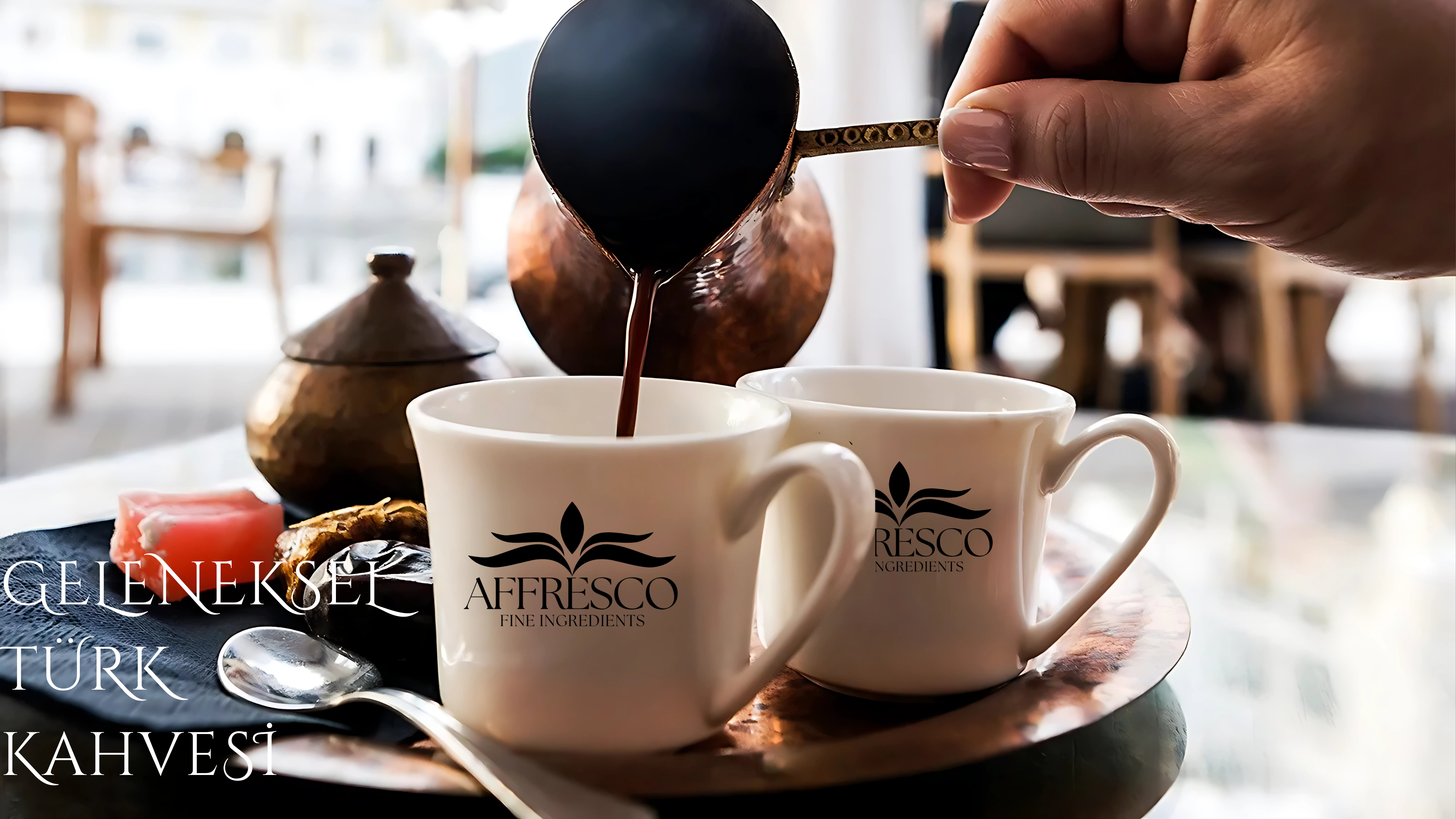Frequently asked questions
Affresco prioritizes sustainability in all product groups. The basic raw materials used in our production are sourced responsibly and support is provided to producers. We take care to obtain our products from sustainable sources. We review our packaging materials to ensure they are recyclable. We aim to reduce water use in our production processes. With these steps, Affresco combines both quality and environmental responsibility, working towards a more sustainable future.
Storage Conditions : Chocolate should be stored at 14-20°C and 40-65% humidity. It is not recommended to store in the refrigerator.
Bloom : Improper storage conditions can cause chocolate to develop a gray coating.
High humidity can cause deterioration in the structure of the chocolate and loss of flavor. It is also important to keep your chocolate away from sunlight and direct light, so it is best to store it in dark places. It is recommended to store your chocolate in airtight containers to minimize contact with air. In this way, you can preserve the aroma of your chocolate and prevent it from being affected by different odors.
Gluten and Barley Malt : Affresco products may contain gluten. Special products are available for those with gluten intolerance; please check the ingredients list on the packaging.
Hazelnut Allergy : Affresco products are not 100% free of hazelnut allergens. There is a risk of cross-contamination.
Soy Lecithin : Some products may contain soy lecithin. For sensitive consumers, this is stated on the packaging.
Lactose Intolerance : Milk and white chocolates contain dairy products; suitable options for those with lactose intolerance are limited.
Vegan Suitability : Some products are animal-free; vegan-certified options are also available.
Vegetarian Suitability : Affresco chocolates are generally suitable for vegetarians. This is indicated on the packaging for sensitive consumers.
Caffeine Sensitivity: Caffeine can cause symptoms such as jitteriness, heart palpitations, or anxiety in some people.
Other Ingredients: Our coffee products may be processed with ingredients that contain dairy, nuts or other potential allergens.
If your chocolate has a dull, white streaky or blotchy appearance on its surface, this is called "chocolate bloom." Chocolate bloom can occur in two types: sugar bloom and fat bloom.
If the white film melts when touched, this is likely due to improper storage conditions, poor tempering, or the presence of other fats such as nut-based fillings. However, if the white film is granular or powdery and does not melt when touched, this is sugar bloom. Sugar bloom is usually caused by storage in a humid environment or by changes in temperature. These changes create condensation on the outer surface of the chocolate, and the interaction of sugar and water results in a white, powdery surface.
If you plan on freezing your chocolate, it's important to keep it well wrapped until it reaches room temperature to avoid condensation problems.
If fat bloom is caused by improper storage temperatures, your chocolate is likely experiencing too high a temperature or sudden temperature changes. It is recommended that you store your chocolate at 15-20°C (60-70°F), less than 50% humidity, and in a well-ventilated area. If the white appearance is due to poor tempering, you can refer to the tempering guide. Also, if your chocolate contains fats other than cocoa butter and milk fat, you may want to consult additional information.
If your chocolate is not setting and is soft to the touch, there could be a few reasons for this. First of all, you should check that the correct temperatures have been reached during the tempering process. It is also important to stir the chocolate frequently as it cools, as well-tempered chocolate will provide a shiny and strong crisp due to the correct crystal formation. If your chocolate is soft at the recommended temperature and humidity, this is probably due to poor tempering and a lack of proper crystal formation. To save chocolate that sets slowly, you should first melt it completely and heat it to 51-54°C (125-130°F). Once this temperature is reached, repeat the process, referring to the tempering instructions again. Well-tempered chocolate sets quickly, providing a shiny surface and a distinct crisp. Since poorly tempered and slowly setting chocolate does not have the optimal amount of crystal seeds, you should ensure that your chocolate has cooled completely with good airflow to remove residual heat after it has been properly tempered.
When making your recipe, if your chocolate is thicker than expected, there are some solutions to fix this. Cocoa butter and other oils can be added to increase the fluidity of your chocolate. You can add the cocoa butter to the chocolate in the amount needed to achieve the ideal consistency. If this is your first time adding cocoa butter, we recommend melting the cocoa butter and chocolate separately. Remember to add 1% of the total weight of cocoa butter, mixing well between each addition; be careful not to introduce too much air into the chocolate. If you are adding oils other than cocoa butter, a little knowledge of oil chemistry will help you understand the effects of these additions on your chocolate. Adding other oils to your chocolate will make the chocolate softer and melt faster. This can make the chocolate more susceptible to bloom (whitening on the surface). For this reason, it is recommended to use tropical and lauric oils, such as coconut and palm oil, as well as nut oils with lower melting points, in very small amounts in your chocolate.
The percentages on chocolate packaging indicate the percentage of cocoa in the chocolate. For example, a dark chocolate bar with the expression 55% cocoa means that 55% of the chocolate consists of chocolate liquor obtained from cocoa beans and added cocoa butter. The remaining 45% is mostly sugar. The higher the percentage on the packaging, the more cocoa content the product contains.

